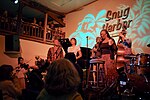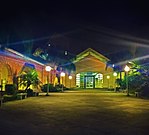Faubourg Marigny
Downtown New OrleansFaubourg MarignyHistoric districts in LouisianaLouisiana populated places on the Mississippi RiverNational Register of Historic Places in Louisiana ... and 4 more
National Register of Historic Places in New OrleansNeighborhoods in New OrleansUse American English from November 2019Use mdy dates from November 2019

The Faubourg Marigny ( FOH-burg MAYR-in-ee; sometimes called The Marigny) is a neighborhood of the city of New Orleans, Louisiana, United States. Its boundaries, as defined by the City Planning Commission, are North Rampart Street and St. Claude Avenue to the north, the railroad tracks along Homer Plessy Way (formerly Press Street) to the east, the Mississippi River to the south, and Esplanade Avenue to the west.
Excerpt from the Wikipedia article Faubourg Marigny (License: CC BY-SA 3.0, Authors, Images).Faubourg Marigny
Royal Street, New Orleans
Geographical coordinates (GPS) Address Nearby Places Show on map
Geographical coordinates (GPS)
| Latitude | Longitude |
|---|---|
| N 29.964722222222 ° | E -90.055277777778 ° |
Address
Royal Street 2241
70117 New Orleans
Louisiana, United States
Open on Google Maps






